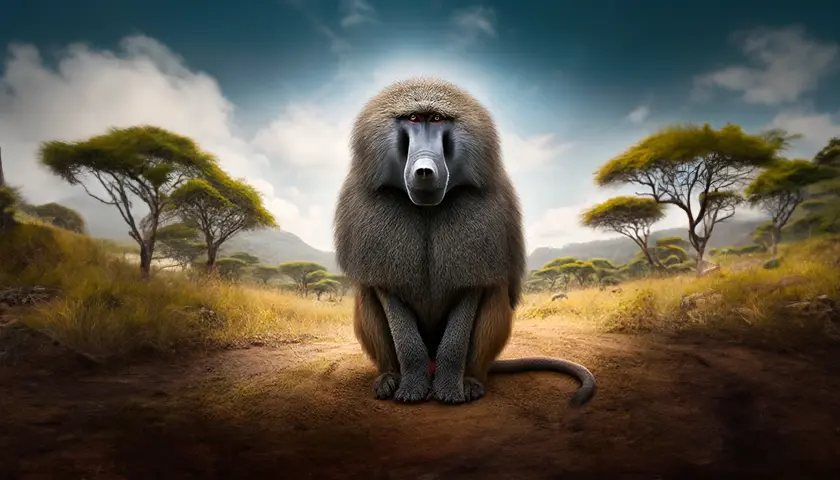Baboons are among the most fascinating primates, known for their intelligence, social structure, and adaptability. These large, terrestrial monkeys are found in various habitats across Africa and Arabia, thriving in savannas, woodlands, and hills. There are five species of baboons: the olive baboon, yellow baboon, chacma baboon, Guinea baboon, and the hamadryas baboon. Each species exhibits unique behaviors and adaptations that make them a subject of extensive study in the field of primatology.
Physical Characteristics and Adaptations
Baboons are easily recognizable due to their distinctive physical features. They have long, dog-like muzzles, close-set eyes, and powerful jaws with sharp canine teeth. Their bodies are covered with thick fur that varies in color depending on the species, ranging from olive green to yellow and brown. One of the most notable features of baboons is their ischial callosities—hardened skin patches on their buttocks, which provide comfort when sitting on rough surfaces. This adaptation is particularly useful for their terrestrial lifestyle.

Social Structure and Behavior
Baboons live in highly organized troops that can number from a few individuals to over a hundred. These troops are characterized by a complex social hierarchy, with dominant males typically leading the group. Female baboons often stay in the troop they were born into, forming strong matrilineal bonds, while males may migrate to other troops to increase their mating opportunities. Social interactions within a troop include grooming, which reinforces bonds and social cohesion. Baboons communicate through a variety of vocalizations, facial expressions, and body postures, showcasing their advanced social intelligence.

Diet and Foraging
As omnivores, baboons have a varied diet that includes fruits, seeds, leaves, insects, and small mammals. Their foraging behavior is opportunistic, and they are known to raid crops, garbage bins, and even human settlements in search of food. This adaptability in their diet allows baboons to thrive in diverse environments. They use their sharp vision and dexterous hands to find and manipulate food, demonstrating problem-solving abilities that are a testament to their intelligence.
Reproduction and Lifespan
Baboons have a polygynous mating system, where dominant males mate with multiple females. Females signal their fertility through prominent swelling of their anogenital area, attracting males for mating. The gestation period for baboons is about six months, after which a single infant is born. Mother-infant bonds are strong, with the mother providing constant care and protection. Baboons reach sexual maturity at around five to eight years old and can live up to 30 years in the wild.
Conservation Status and Threats
Despite their adaptability, baboons face several threats that impact their survival. Habitat loss due to deforestation, agricultural expansion, and human encroachment is a significant concern. Additionally, baboons are sometimes hunted for bushmeat or persecuted as pests. Conservation efforts are essential to ensure the protection of their natural habitats and to mitigate human-wildlife conflicts. Educating local communities about the ecological role of baboons can help in developing sustainable coexistence strategies.

Conclusion
Baboons are remarkable primates that exhibit complex behaviors and social structures. Their ability to adapt to various environments highlights their resilience and intelligence. Understanding and protecting these primates is crucial for maintaining the biodiversity of their ecosystems. Through continued research and conservation efforts, we can ensure that baboons remain a thriving part of the natural world.







